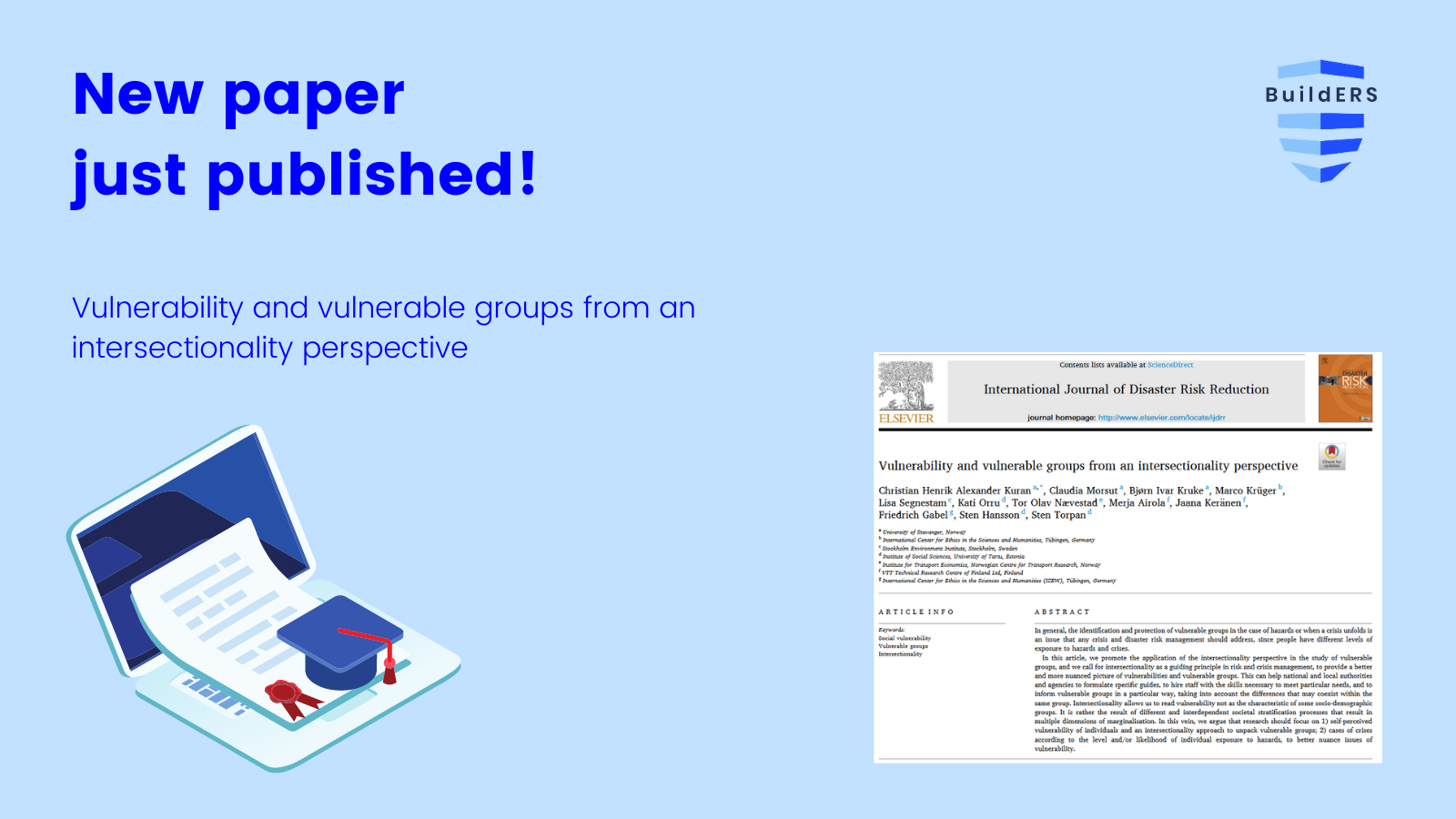This can help national and local authorities and agencies to formulate specific guides, to hire staff with the skills necessary to meet particular needs, and to inform vulnerable groups in a particular way, taking into account the differences that may coexist within the same group.
Intersectionality allows to read vulnerability not as the characteristic of some socio-demographic groups. It is rather the result of different and interdependent societal stratification processes that result in multiple dimensions of marginalisation. In this vein, the paper argues that research should focus on 1) self-perceived vulnerability of individuals and an intersectionality approach to unpack vulnerable groups; 2) cases of crises according to the level and/or likelihood of individual exposure to hazards, to better nuance issues of vulnerability.
Download the full article here
Authors: Christian Henrik, Alexander Kuran, ClaudiaMorsut, Bjørn Ivar Kruke, Marco Krüger, Lisa Segnestam, Kati Orru, Tor Olav Nævestad, Merja Airola, Jaana Keränen, Friedrich Gabel, Sten Hansson, Sten Torpan
